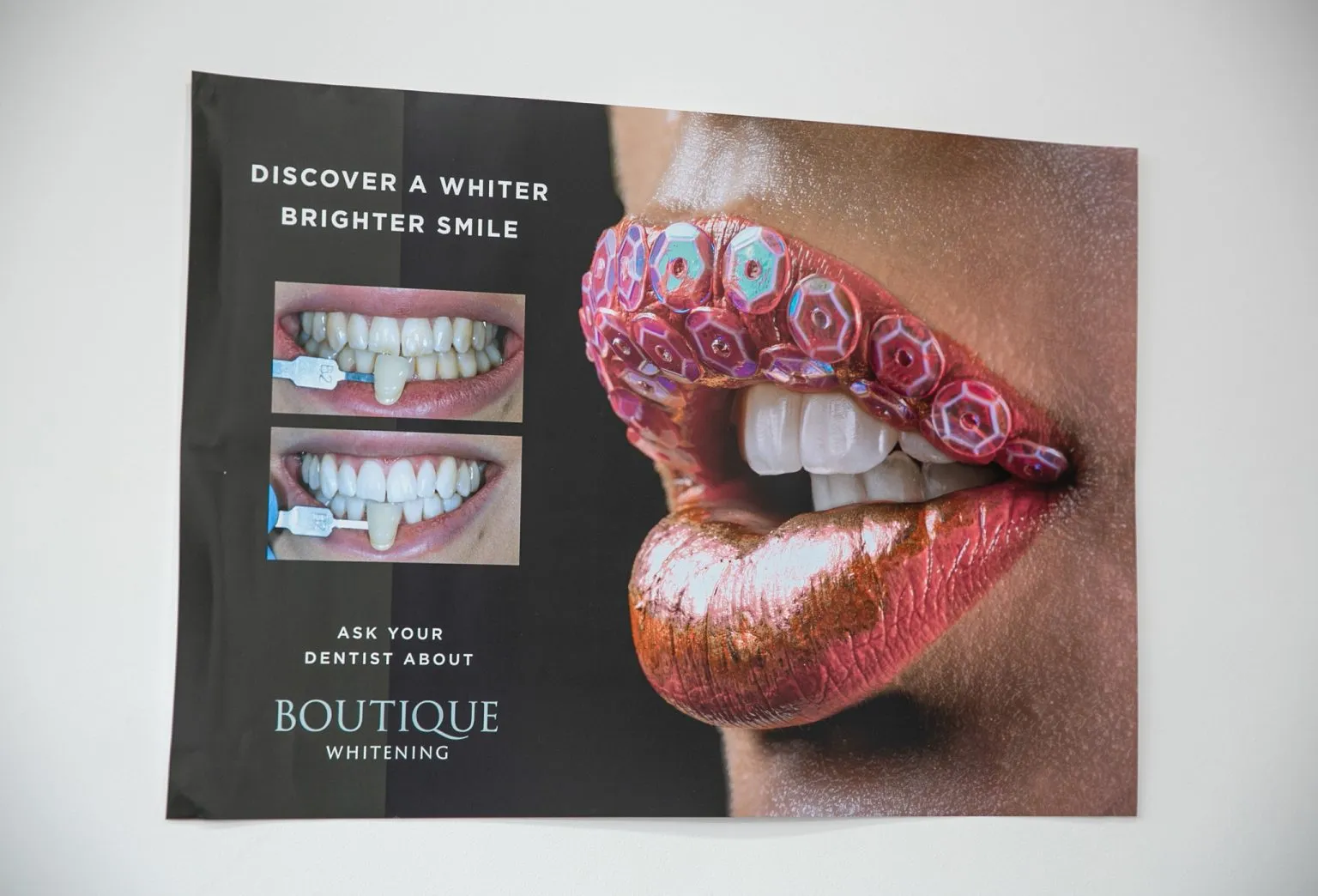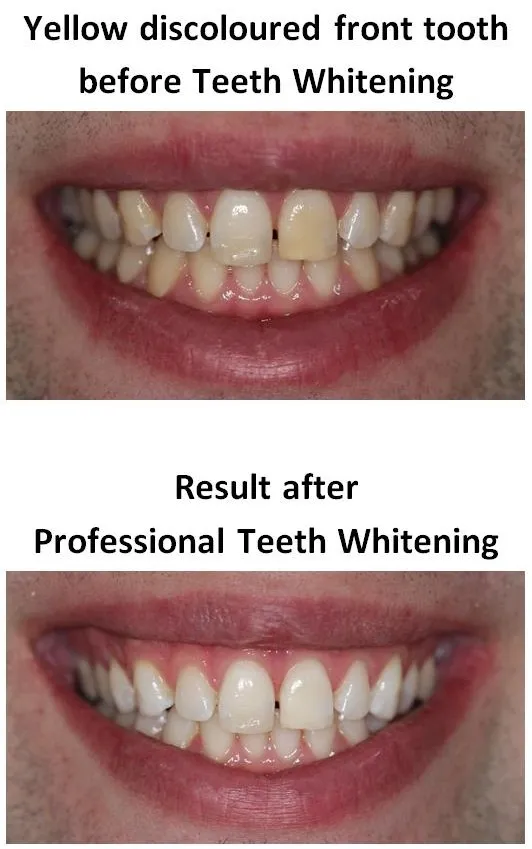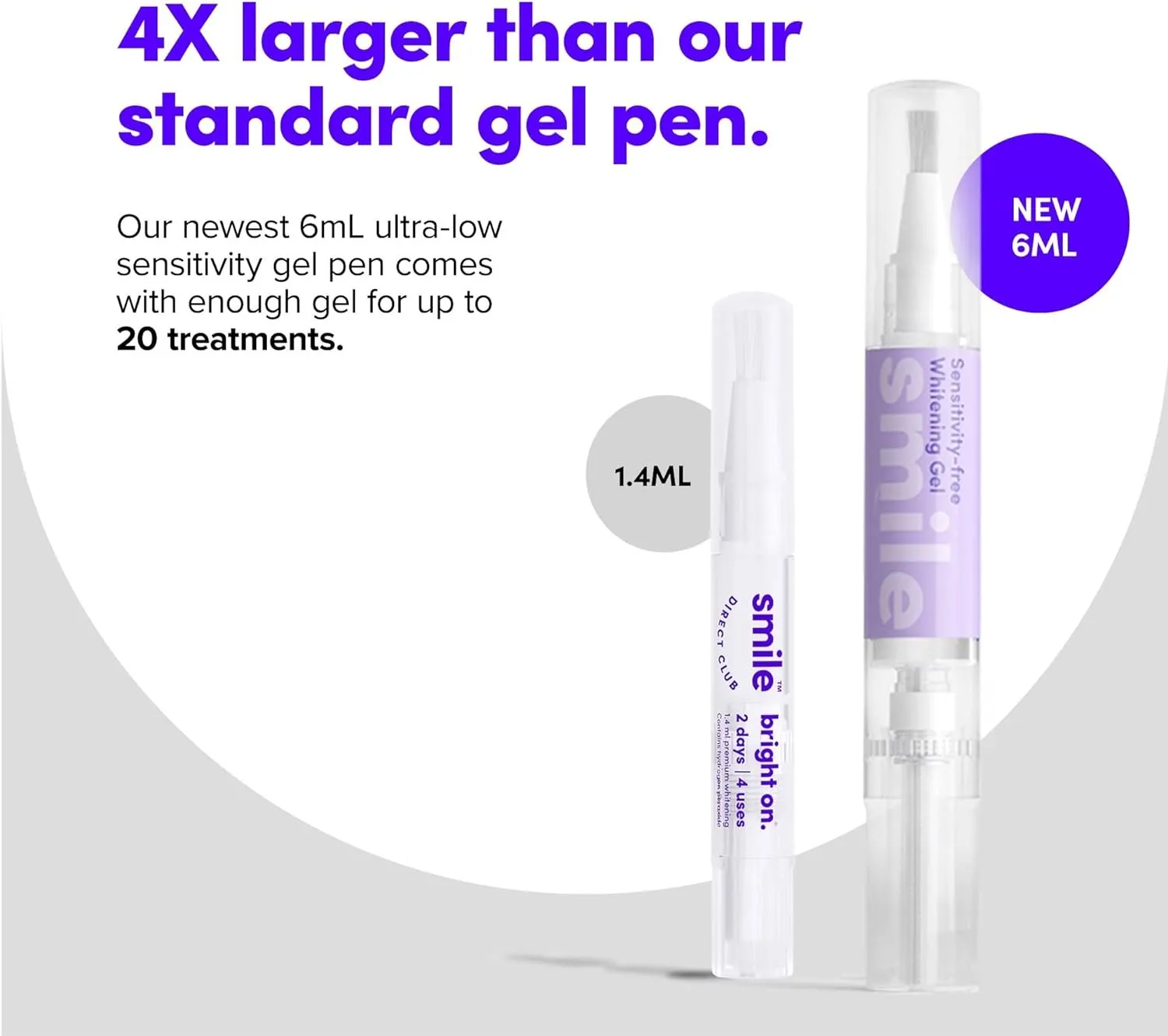What Is Gentle Teeth Whitening
Gentle teeth whitening offers a less aggressive approach to achieving a brighter smile. Unlike traditional methods that may use strong chemicals, gentle techniques focus on minimizing sensitivity and protecting tooth enamel. This approach is especially beneficial for individuals with sensitive teeth, as it reduces the likelihood of discomfort during and after the whitening process. Gentle whitening aims to lift stains and discoloration from the surface of your teeth while prioritizing the health and well-being of your oral tissues. By using milder ingredients or lower concentrations of whitening agents, this method provides a viable option for those who desire a more comfortable and safer whitening experience. The ultimate goal is to enhance your smile’s aesthetic appeal without compromising your oral health, making it a popular choice for those seeking a balanced approach to cosmetic dentistry.
Benefits of Gentle Teeth Whitening
Gentle teeth whitening offers a range of advantages, making it an attractive option for many seeking a brighter smile. The key benefits include a reduced risk of sensitivity, better enamel protection, and the use of natural ingredients in some products. These features make the process more comfortable and less likely to cause the common side effects associated with stronger whitening treatments. By choosing gentle methods, individuals can improve their smile’s appearance with a greater degree of comfort and safety. The emphasis on oral health and the use of milder ingredients contribute to a more positive and sustainable whitening experience.
Less Sensitivity

One of the primary advantages of gentle teeth whitening is the reduced likelihood of tooth sensitivity. Traditional whitening treatments may cause temporary sensitivity due to the penetration of whitening agents into the tooth enamel. Gentle methods, on the other hand, typically use lower concentrations of these agents or employ ingredients that are less likely to irritate the nerves in your teeth. This can lead to a more comfortable experience during and after the whitening process, allowing individuals to achieve their desired results without the discomfort of sensitive teeth. This makes gentle whitening a suitable choice for people who have always had sensitive teeth or have had issues with traditional treatments.
Enamel Protection
Gentle teeth whitening methods are designed to protect the enamel. Harsh whitening treatments can potentially erode the enamel over time, making teeth more susceptible to decay and sensitivity. Gentle techniques often minimize this risk by using milder formulas or by including ingredients that help fortify the enamel. This focus on enamel protection ensures that the whitening process is not only aesthetically pleasing but also contributes to the long-term health of your teeth. It’s an important consideration for anyone who wants to improve their smile’s appearance without compromising their dental well-being.
Natural Ingredients
Some gentle teeth whitening options incorporate natural ingredients, such as activated charcoal or hydrogen peroxide, which is used in lower concentrations. These ingredients can help lift stains from the teeth’s surface while being less harsh on the enamel. The use of natural ingredients appeals to individuals who prefer a more holistic approach to their oral care. This is an excellent option for people concerned about the chemical composition of their products. Natural ingredients offer a gentler, often plant-based alternative for achieving a brighter, healthier smile.
Who Is a Good Candidate

Gentle teeth whitening is suitable for a wide range of individuals, particularly those who are mindful of their oral health and desire a less aggressive approach. Those with sensitive teeth, individuals looking for natural options, and anyone who has experienced discomfort with traditional whitening methods can benefit greatly from this approach. It provides a safer and more comfortable way to achieve a brighter smile. The key is finding the right product or treatment that aligns with your specific needs and preferences, ensuring both aesthetic enhancement and oral well-being.
People with Sensitive Teeth
People with sensitive teeth often find gentle teeth whitening to be the ideal solution. The reduced concentration of whitening agents or the use of alternative, milder ingredients minimizes the risk of triggering sensitivity. This allows individuals with sensitive teeth to improve their smile’s appearance without the discomfort often associated with harsher treatments. Gentle options provide a comfortable and effective way to address discoloration and staining, ensuring that those with sensitive teeth can confidently pursue a brighter, healthier smile.
Those Seeking Natural Options
For individuals who prefer natural and holistic approaches to their health and wellness, gentle teeth whitening offers a compelling choice. Many gentle whitening products utilize natural ingredients such as activated charcoal, baking soda, or hydrogen peroxide in lower concentrations. These options provide a way to whiten teeth while avoiding strong chemicals. This approach aligns with a desire to use more natural and less processed products, making it ideal for those who prioritize a holistic approach to oral care. Choosing gentle whitening allows you to achieve a brighter smile while staying true to your preferences for natural products.
Types of Gentle Teeth Whitening

Gentle teeth whitening comes in various forms, each offering a unique approach to brighten your smile. The most common options include over-the-counter products like whitening toothpastes and strips, which are easily accessible and convenient for at-home use. Professional options administered by dentists include in-office whitening and at-home tray systems, which offer more controlled and often more potent results. Understanding the different types of gentle teeth whitening can help you make an informed decision and find the best method to achieve your desired results.
Over-the-Counter Options
Over-the-counter gentle teeth whitening options are readily available in most drugstores and online, providing convenient and accessible solutions for brightening your smile. These options are typically more affordable than professional treatments and are designed for easy at-home use. They are an excellent choice for anyone looking for a quick and cost-effective way to enhance their teeth’s appearance without a dental visit. Always read the product instructions carefully to ensure safe and effective results.
Whitening Toothpastes
Whitening toothpastes are a popular over-the-counter option for gentle teeth whitening. They often contain mild abrasives and/or low concentrations of hydrogen peroxide or other whitening agents to remove surface stains and brighten teeth. Regular use of whitening toothpaste can gradually improve your smile’s appearance. It’s a convenient and easy way to incorporate teeth whitening into your daily routine. Always follow the product’s directions and consult with your dentist if you have any concerns about sensitivity or specific ingredients.
Whitening Strips

Whitening strips are thin, flexible strips coated with a whitening gel that is applied directly to your teeth. They are another widely available over-the-counter option, usually containing hydrogen peroxide as the active whitening ingredient. The strips are designed to be worn for a specific amount of time each day, gradually lifting stains and discoloration from your teeth’s surface. Following the product instructions is crucial for achieving the best results, and it’s always wise to be mindful of potential side effects such as tooth sensitivity.
Professional Gentle Teeth Whitening
Professional gentle teeth whitening is performed by a dentist and offers more controlled and often more effective results than over-the-counter options. These treatments typically use higher concentrations of whitening agents under professional supervision, ensuring the safety and efficacy of the process. Professional whitening can address stubborn stains and provide a more dramatic improvement in your smile’s brightness. Consulting with your dentist allows for a personalized treatment plan and can help minimize the risk of sensitivity or other side effects.
In-Office Whitening
In-office teeth whitening involves a dentist applying a powerful whitening gel directly to your teeth. This procedure is performed in a controlled clinical environment, allowing the dentist to monitor your teeth and gums throughout the process. The whitening gel is often activated by a special light or laser to speed up the whitening effect. In-office whitening offers immediate results and is ideal for people who want a significantly brighter smile in a single visit. Due to the professional supervision, it is a safe and efficient method, although potential side effects include temporary sensitivity.
At-Home Trays

At-home teeth whitening trays are customized to fit your teeth perfectly. Your dentist will make an impression of your teeth and create trays designed for you to use at home. You fill the trays with a whitening gel provided by your dentist and wear them for a prescribed amount of time each day or night. This method offers a balance of professional-grade results and the convenience of at-home use. Because the treatment is done under the guidance of your dentist, the risk of side effects is minimal, making it a safe and effective option for gentle teeth whitening.
How to Achieve a Sparkling Smile
Achieving a sparkling smile with gentle teeth whitening requires a combination of informed decision-making, consistent care, and proper maintenance. Start by consulting your dentist to determine the best approach for your specific needs and oral health condition. It’s essential to choose products or treatments that align with your sensitivity levels and lifestyle. Following product instructions meticulously is crucial, whether you opt for over-the-counter solutions or professional treatments. Complementing these steps with good oral hygiene and dietary choices will help you maximize the benefits of whitening and maintain a healthy, radiant smile.
Consult Your Dentist
Before starting any teeth whitening treatment, consulting your dentist is a critical first step. Your dentist can assess your oral health, identify any underlying issues like cavities or gum disease, and recommend the most appropriate whitening method for your specific needs. Professional advice ensures a safe and effective whitening experience. They can also provide personalized guidance on how to maintain your results and address any potential side effects. The initial consultation helps to tailor the treatment to your needs, maximizing the benefits and minimizing the risks.
Follow Product Instructions

Whether you choose over-the-counter or professional whitening treatments, carefully following the product instructions is key to achieving the best results. This includes the amount of product to use, the duration of application, and any other specific guidelines provided by the manufacturer or your dentist. Adhering to these instructions not only enhances the effectiveness of the whitening process but also helps minimize potential side effects. It will help you avoid the risk of irritation or sensitivity, and ensures a safe and positive experience throughout your teeth whitening journey.
Maintain Good Oral Hygiene
Maintaining good oral hygiene is essential for maximizing and preserving the results of your gentle teeth whitening. This includes brushing your teeth twice a day with a fluoride toothpaste, flossing daily to remove plaque and food particles from between your teeth, and using an antimicrobial mouthwash. Regular dental check-ups and professional cleanings are also critical for maintaining your oral health and the brightness of your smile. Good oral hygiene habits will not only enhance your whitening results but also help prevent new stains from forming.
Dietary Considerations
Your diet plays a significant role in the success and longevity of your gentle teeth whitening results. Certain foods and drinks can stain your teeth and counteract the whitening process. Being mindful of what you consume and making smart dietary choices can help you maintain a brighter smile for longer. This involves avoiding staining foods and drinks while incorporating tooth-friendly options into your daily routine.
Foods and Drinks to Avoid

To preserve the results of your gentle teeth whitening, it’s important to limit or avoid certain foods and drinks that are known to stain teeth. These include coffee, tea, red wine, dark sodas, and certain fruit juices. Highly pigmented foods such as berries, soy sauce, and curries can also contribute to discoloration. Cutting back on these items or rinsing your mouth with water after consuming them can help minimize the effects of staining.
Foods and Drinks to Consume
Incorporating teeth-friendly foods and drinks into your diet can support your gentle teeth whitening efforts and maintain a brighter smile. Dairy products like milk, yogurt, and cheese are rich in calcium and help strengthen your teeth. Crunchy fruits and vegetables, such as apples, celery, and carrots, can help remove surface stains as you eat them. Drinking plenty of water also helps rinse away food particles and keeps your mouth clean. Green tea can also offer benefits, thanks to its ability to fight bacteria and reduce plaque formation.
Gentle Teeth Whitening: Risks and Side Effects
While gentle teeth whitening methods are designed to minimize the risks associated with traditional treatments, it’s still important to be aware of potential side effects. Understanding these potential issues can help you make an informed decision about teeth whitening and take necessary precautions to protect your oral health. Common side effects include temporary tooth sensitivity and mild gum irritation. Fortunately, most of these effects are temporary and can be managed with proper care and dental advice.
Tooth Sensitivity
Tooth sensitivity is a common side effect of teeth whitening, even with gentle methods. This can occur because the whitening agents can penetrate the enamel and reach the nerves in your teeth. The sensitivity is usually temporary and will subside shortly after the treatment is completed. Using desensitizing toothpaste, avoiding very hot or cold foods and drinks, and following your dentist’s recommendations can help manage the discomfort. If sensitivity persists, consult with your dentist for further advice and management strategies. The goal is to provide a more comfortable whitening experience.
Gum Irritation
Gum irritation is another potential side effect of gentle teeth whitening. It can occur if the whitening agent comes into contact with your gum tissue. This irritation can manifest as redness, swelling, or tenderness in the gums. Preventing gum irritation typically involves carefully applying whitening products and avoiding excessive amounts. If you experience gum irritation, discontinue use and consult your dentist. They can assess the situation and recommend steps to reduce irritation. Proper application techniques and adherence to instructions are essential for minimizing potential issues.
Conclusion
Gentle teeth whitening offers a safe and effective way to enhance your smile’s appearance, particularly for those with sensitive teeth or a preference for less aggressive treatments. With various options available, from over-the-counter products to professional treatments, individuals can choose a method that best suits their needs and preferences. By consulting with a dentist, following product instructions, maintaining good oral hygiene, and being mindful of your diet, you can achieve a sparkling, brighter smile. Remember to prioritize your oral health and address any concerns with your dentist to ensure a positive and long-lasting outcome.
